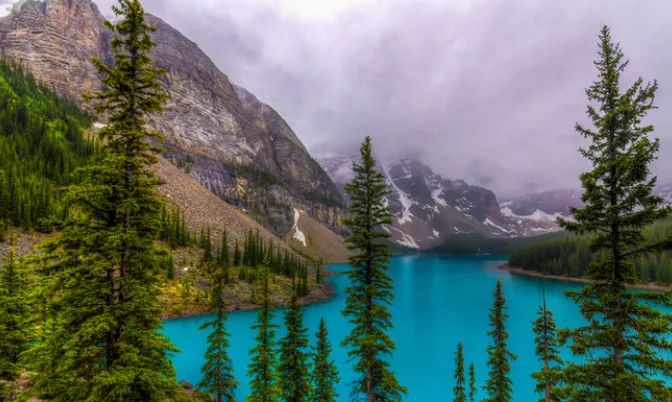
In honour of World Water Day, here are 8 Canadian lakes everyone's got to see
Canada is beautiful.
World Water Day is on Saturday, March 22, 2025. The United Nations-led day of observance was established to celebrate and draw awareness to one of Earth's most precious resources. This year, the focus is on glaciers and protecting frozen water sources for future generations.
In honour of the day, we're taking a tour of some of Canada's lakes.
Nearly 9 per cent of Canada's surface is covered in freshwater, and we have a lot of lakes.
The country is home to 563 lakes larger than 100 square kilometres, and we have more lake area than any other country on the planet.
Here are eight noteworthy lakes.
We've left the Great Lakes out of this list, but they're definitely worth a visit as well.
8. Garibaldi Lake, B.C.
Located south of Squamish in Garibaldi Provincial Park, the area around this spectacular lake offers incredible hiking trails that wind around mountains, glaciers and waterfalls, among other things. The park is a wildlife protected area, so you'll probably catch a glimpse of a few furry friends as well.
7. Okanagan Lake, B.C.
The area around this stunning lake boasts sandy beaches, beautiful pine trees and panoramic views. There's a reason many visitors to B.C. have this lake on their "must see" list.
6. Lake Moraine, Alberta
Arguably one of Canada's most famous lakes, Moraine Lake is a glacially-fed body of water located in Banff National Park. It reaches its crest in mid-to-late June and, due to refraction off the rock flour deposited in the lake, the water is a stunning shade of blue.
5. Lake Winnipeg, Manitoba
An incredible place to take in the northern lights, Lake Winnipeg covers a whopping 24,514 square kilometres and is the sixth-largest freshwater lake in Canada. There's plenty to do here, from canoeing, to waters skiing, to relaxing on a dock with a good book.
4. Muskoka Lake, Ontario
Mention "Muskoka" to many Ontario residents and they'll start daydreaming about spectacular sunsets, lazy days on a dock, and wildlife, not to mention picturesque cottages and those famous Muskoka chairs.
Located between Port Carling and Gravenhurst, the area is a huge tourist draw year-round.
3. Lake Champlain, Quebec

Photo Credit: Travisleehardin/Wikipedia. CC BY-SA 3.0.
There's lots to see and do in and around Lake Champlain, which stretches into the U.S. states of Vermont and New York, as well as into Quebec.
Visit miltary forts, check out light houses, and take in the history of the area. In Vermont, it's referred to as an unofficial Great Lake.
2. Bras d'Or Lake, Nova Scotia

The Seal Island Bridge, viewed from the Bras d'Or look off on Kelly's Mountain. Photo Credit: Ken Heaton/Wikipedia. CC BY-SA 3.0.
Located on Cape Breton Island, the lake, called Unama’ki in Mi’kma’ki resides on the ancestral and unceded territory of the Mi’kmaq people.
It covers an area of approximately 1,099 square kilometres and in 2011, UNESCO designated the site the Bras d'Or Lake Biosphere Reserve.
Surrounded almost completely by hills, mountains and trees, the area offers one photo op after another.
1. Great Slave Lake, Northwest Territories
The Great Slave Lake is the second-largest lake in Canada's NWT, following Great Bear Lake, covering an area of 27,200 square kilometres. It's also the deepest in North America at 614 metres. Oh: And it's spectacular.
